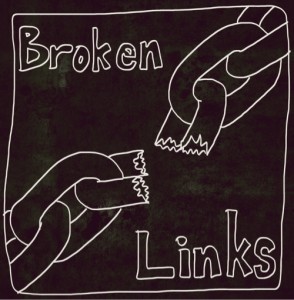Geek Tweak: How to Find Broken Links

How to Fix Broken Links
How do you find broken links on your WordPress blog? For a couple of years I was a fan of Broken Link Checker. This plugin works like a charm. Plug it in, activate it and rest assured that it will chug away in the background digging through your website’s links and identifying “link rot” so that your digital domain can be as tidy and user-friendly as your white picket fence domain. It’s a simple set-and-forget way to find broken links.
Broken Link Checker is a good plugin to monitor and remove or nofollow dead links in your website. It has the ability to monitor almost any part of your website, including your posts, pages, comments, blogroll and the custom fields. The plugin is not only limited to links that doesn’t work but also detects missing images and redirects. Broken Link Checker can even prevent search engines from following broken links and let’s you edit the link directly from the plugin’s page without manually updating the posts. (Themecrunch.com)
Sounds perfect! In many ways it is/was. While I remain a fan of this simple and reliable way to find broken links, I’ve deactivated it across all of my WordPress sites on the advice of my developer. Why? It turns out that same diligence that makes it a dependable and thorough tool to find broken links also strains our server. Big time. After being throttled repeatedly by my hosting company for overwhelming the server, my developer narrowed down the problem to the plugin.
You have a plugin installed called Broken Link Checker. It spams your domain with HTTP requests and can cause worker processes to be spawned. ~ Zach Russell
Tools to Find Broken Links
We disabled the plugin and the problems have (apparently) abated. But we still needed to be able to find broken links, so Zach proposed these alternatives:
- Online Broken Link Checker We recommend that you… [this] tool to check for your broken links. It’s not a plugin, and won’t make the server unhappy.
- Integrity (for Mac OSX) An even better solution… would be an application that you install on your computer.
I’ve been trial testing the Online Broken Link Checker and it certainly works well. But it’s self-initiated (read easily overlooked, postponed, etc.) which is obviously less desirable than a diligent digital gone working away in the background. But it also doesn’t overwhelm the server which is good, er, essential. I haven’t experimented with Integrity (now that’s a funny phrase taken out of context!) or its premium cousin, Scrutiny yet. Soon perhaps. Unless I can divine a better solution to find broken links?
Root Out Link Rot
I know I’m not alone with this blogger challenge. How do you find broken links on your blog? Do you use a website-based plugin to monitor and mend link rot? An independent web-based service like Brokenlinkcheck.com? Or maybe a standalone application like Integrity or Scrutiny?
Related articles
- Link Rot (history.pcusa.org)
- Have You Looked Under the Hood of Your Website Lately? (jenifferthompson.com)



